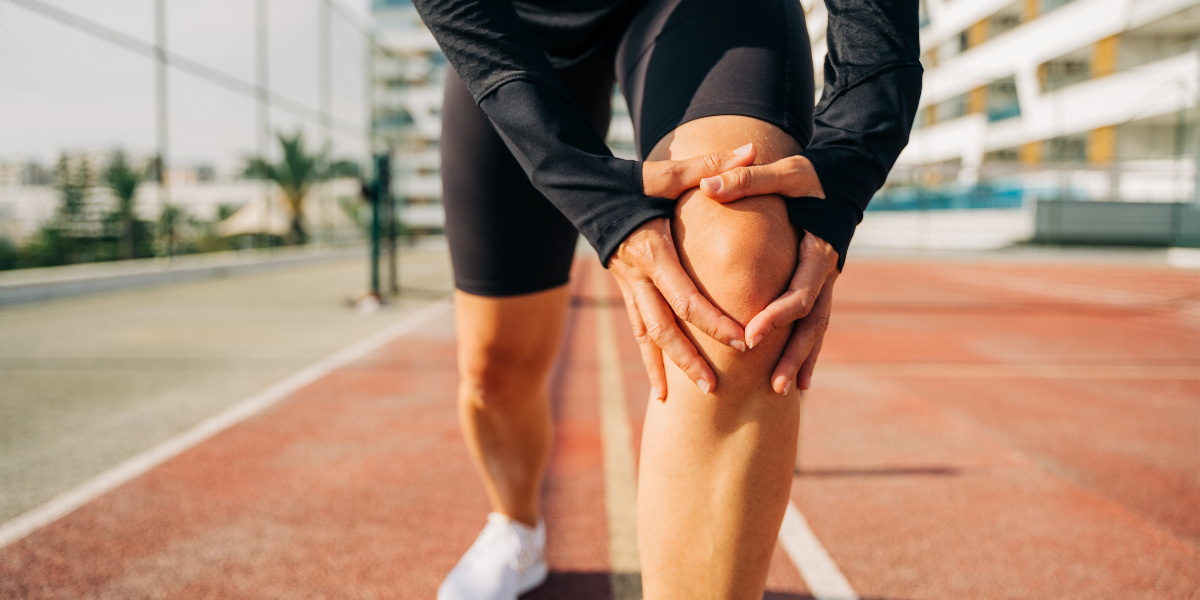
Patellofemoral Pain Syndrome Self-Care: How to Treat Runner’s Knee Yourself Like a Physical Therapist
|
|
|
Read in 6 min
Get free shipping on orders over {{threshold}}!
|
|
|
Read in 6 min
Patellofemoral Pain Syndrome (PFPS), also known as Runner's Knee, is a common issue for many active individuals. But here's the good news: you don't have to let it keep you off your feet. With the right knowledge and tools, you can manage and even fix Runner’s Knee from the comfort of your home. Let's dive into how you can treat Patellofemoral Pain Syndrome yourself, using the effective methodology developed in physical therapy.
Runner’s Knee is a common repetitive stress injury that affects about 20% of all adults at some point in their life. It’s characterized by a dull ache inside your knee or behind the kneecap, which can turn into a sharp pain when the knee is compressed (i.e., when you bend your knee more than about 30 degrees). Many people develop this inner knee pain from running, or other activities that involve repetitive impact on the knee joint.
The root cause of Patellofemoral Pain Syndrome is weakness and imbalance in the thigh muscles that work together to place the kneecap in the correct position. The pain from the malaligned kneecap causes the VMO muscle (Vastus Medialis Oblique, one of the four parts of your quad muscles) to switch off, worsening the power imbalance and kneecap malalignment.
In essence, this is the negative feedback cycle that we need to stop with effective Patellofemoral Pain Syndrome self-care techniques.
Physical therapy can be an effective, non-invasive treatment for this condition. While it can be challenging to access physical therapy on a regular basis, the current best practice in physical therapy gives you a solid foundation for Patellofemoral Pain Syndrome self-care.
Let's look at the three treatment modalities that effective physical therapy treatment incorporates:
Physical therapists use taping to reduce the load going through the knee. This relieves pain and keeps you active, which means your body's capacity to take on the challenges of your favorite activities won't go down (a key to preventing recurrences).
In Runner's Knee, pain relief is doubly important. Remember, we need to stop the vicious cycle of knee pain and VMO switching off, which makes the pain worse. Taping reduces pain, and that helps your VMO stay in the game, keeping the kneecap in the correct position.
This massage technique activates the VMO muscle so that it can provide proper support to the knee and keep the kneecap in the correct position. Soft tissue mobilization also helps resolve adhesions and other issues in the underlying tissue for long-term resolution.
Strengthening and stabilizing the whole kinetic chain from the hip down to the foot ensures all the muscles and tendons are working together to handle the load and stress of everyday activities. Increasing your capacity to handle the load is essential for relieving the knee joint now, as well as for full Runner’s Knee resolution.
Treating Runner’s Knee at home used to be hit or miss. That's why we brought the Alleviate Method to this condition. Designed to empower you with the tools and methodology to self-treat chronic pain conditions yourself, the Alleviate Method has helped over 20,000 our users recover.
And now, you can replicate the gold standards of physical therapy care for Runner’s Knee without leaving your home. Our first Runner's Knee recovery tool, the Runner's Knee Essentials, comes with a massage blade (1) and a PT exercise program (2).
With active treatment using the Alleviate Method, you will notice a significant difference within 10-14 days. Our Guided Recovery Program uses a “test, intervention, retest” model, allowing you to see noticeable pain reduction and function improvement from day one, which helps keep your mental game strong.
By gradually increasing the load and your capacity to handle it, you can return to your favorite activities without knee pain from Patellofemoral Pain Syndrome.
Start with Load Management: Avoid activities that exacerbate your symptoms, like running or jumping, until your pain subsides. Again – we want you to be active – but you will probably need to modify at first until we can get your pain under control.
Incorporate Soft Tissue Mobilization: Use a massage tool on your thighs and calves to relieve tension and improve blood flow. Perform instrument-assisted soft tissue mobilization on the VMO muscle to activate it and support proper kneecap alignment.
Lean into Progressive Strengthening: Begin with low-impact exercises to strengthen your quadriceps and VMO muscle. Gradually increase the load and complexity of your exercises as your knee becomes stronger and more stable.
Manage Your Running Load: Gradually increase your running distance and intensity to avoid overloading your knees. Make sure to activate your VMO first, so your knee is ready for running and any other activities.
Stay Consistent: Follow your knee self-care plan diligently, preferably on a daily basis. Keep a journal of your progress to stay motivated and track improvements in pain and function.
Listen to Your Body: If an exercise or activity causes sharp pain, stop immediately and reassess your technique or intensity. Ensure adequate rest and recovery between sessions to prevent overuse injuries.
Seek Guidance: While the Guided Recovery Program gives you plenty of tutorials, Runner's Knee education, and exercise cues, don’t hesitate to contact us if you’re unsure about any part of the recovery process.

